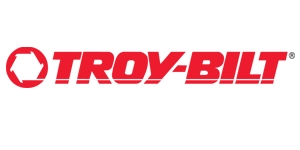
Seal the Deal: A Guide on What to Look for in Exterior Caulk
When it comes to protecting your home from the elements, few things are as crucial as a well-applied exterior caulk. This unsung hero plays a vital role in sealing gaps, preventing moisture intrusion, and maintaining the integrity of your home. However, not all caulks are created equal, and choosing the right one can make a significant difference. In this blog post, we'll explore the key factors to consider when selecting exterior caulk to ensure you make a choice that stands up to the test of time.
Weather Resistance
Look for exterior caulk that is specifically designed to withstand the rigors of your local climate. If you experience extreme temperature variations, heavy rainfall, or intense sunlight, opt for a caulk with excellent weather resistance. High-quality caulks will be formulated to expand and contract with temperature changes without cracking or losing adhesion.
Flexibility and Elasticity
Flexibility is a critical characteristic of exterior caulk. Your home is subject to natural movements, and the caulk should be able to stretch and compress without breaking or pulling away from surfaces. A caulk labeled as "elastomeric" is an excellent choice as it maintains its flexibility over time.
Adhesion Properties
The effectiveness of caulk lies in its ability to adhere securely to various surfaces. Ensure that the caulk you choose adheres well to common exterior materials like wood, metal, concrete, and masonry. Some caulks are formulated for specific materials, so check the product label for compatibility information.
Durability and Longevity
Nobody wants to be re-caulking their home every other year. Look for caulks with a proven track record of durability and longevity. High-quality caulks resist deterioration from UV rays, moisture, and other environmental factors. Reading reviews or seeking recommendations from professionals can give you insights into a caulk's performance over time.
Paintability
If you plan to paint over the caulk to match your home's color scheme, choose a caulk that is paintable. Some caulks are designed to blend seamlessly with painted surfaces, while others may not accept paint well. Check the caulk's specifications to ensure it meets your aesthetic preferences.
Mold and Mildew Resistance
Exterior caulks that resist mold and mildew growth are especially important in areas prone to high humidity or frequent rain. A caulk with added antimicrobial agents can help prevent the unsightly and potentially damaging effects of mold and mildew.
Ease of Application
Consider the ease of application, especially if you're planning a DIY project. Some caulks come in user-friendly cartridges that fit into caulking guns, making the application process smoother. Additionally, look for caulks that tool easily, allowing you to achieve a neat and professional finish.
Cleanability
In areas where dirt and pollutants are prevalent, a caulk that is easy to clean and maintain can be a practical choice. Some high-quality caulks are designed to resist staining and are easily cleanable with common household cleaners.
Conclusion
Selecting the right exterior caulk is a critical step in maintaining the integrity and weather resistance of your home. By considering factors such as weather resistance, flexibility, adhesion properties, durability, paintability, mold resistance, ease of application, and cleanability, you can make an informed choice that ensures your caulking job stands strong against the elements for years to come. Remember, investing in quality caulk is an investment in the long-term protection and beauty of your home.


















